The Norwegian Elkhound Dog - Your Loyal Gray Ghost and Canine Wonder!"
 Introduction and Breed Background
Introduction and Breed Background
Welcome to the captivating world of the Norwegian Elkhound, where regal beauty meets unwavering loyalty. Are you ready to be enchanted by the graceful silver-gray coat and irresistible charm of this extraordinary canine wonder? Before you embark on this exciting journey of companionship, let's dive into the depth of the Norwegian Elkhound's fascinating traits and discover why it's a breed like no other.
Nicknamed the "Gray Ghost" for its striking appearance and exceptional hunting abilities, the Norwegian Elkhound has a rich history deeply intertwined with its Scandinavian homeland. With an air of mystery surrounding its ancient origins, this breed has been a faithful companion to Norwegian hunters and explorers for centuries.
Considerations to understand before choosing this breed:
Before bringing a Norwegian Elkhound into your life, there are some essential considerations to keep in mind. This breed thrives on active engagement and enjoys spending quality time with its human family. So, if you're an adventure seeker looking for a loyal and playful companion, the Norwegian Elkhound might be the perfect fit for you!
Interesting and fun facts about this breed:
Did you know that the Norwegian Elkhound is known for its distinct ability to bark in three different tones? It uses this unique vocalization to communicate with its human companions during hunting trips.
This breed has a fascinating history of being a guardian and protector of livestock, as well as an expert hunter of moose, bears, and other game. In addition to being a skilled hunter, the Norwegian Elkhound also excels in agility competitions, showcasing its versatility and intelligence.
Breed Background and History
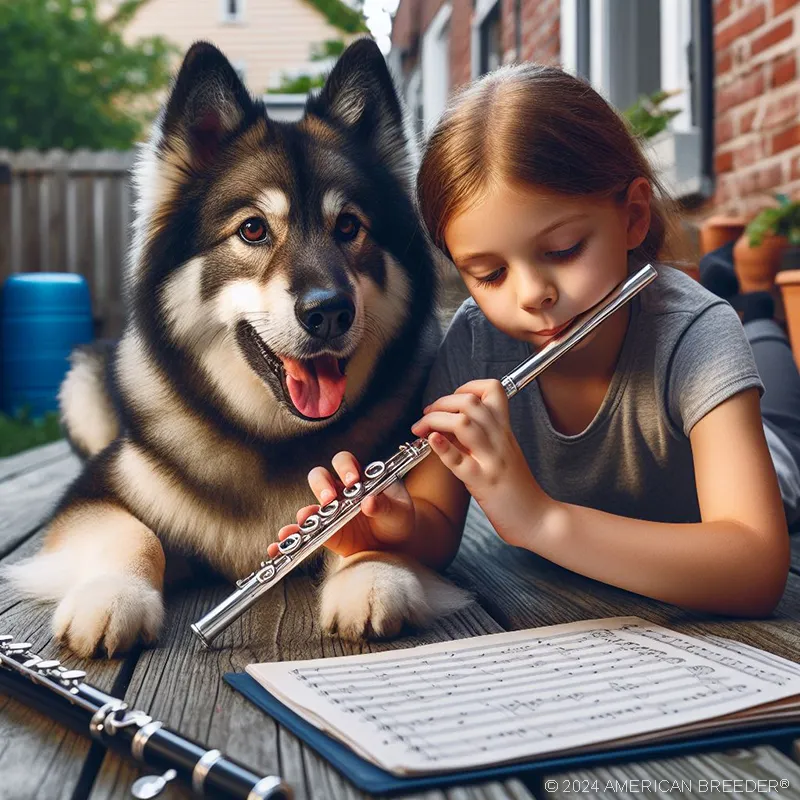 Origin and development of the breed:
Origin and development of the breed:
Travel back in time to the rugged landscapes of Norway, where the Norwegian Elkhound's ancestors roamed alongside the fearless Vikings. These ancient dogs were instrumental in the survival of their human counterparts, providing both companionship and assistance in hunting large game.
Historical significance and cultural relevance:
The Norwegian Elkhound's rich history has left an indelible mark on Norwegian culture. Its image can be found in ancient Norse artwork and tales, showcasing the deep bond between these dogs and their human companions. Today, the breed remains a symbol of courage, loyalty, and perseverance in Norwegian folklore.
Purpose and original use of the breed:
The Norwegian Elkhound's primary purpose was to assist in hunting and tracking large game, such as moose and bears. Their agile and tenacious nature made them invaluable allies to hunters, ensuring the success of their expeditions.
Kennel clubs that classify this breed:
The Norwegian Elkhound is recognized and registered by esteemed kennel clubs such as the American Kennel Club (AKC), The Kennel Club (UK), the Canadian Kennel Club (CKC), the Australian National Kennel Council (ANKC), the Fédération Cynologique Internationale (FCI), and the Japan Kennel Club (JKC).
Appearance
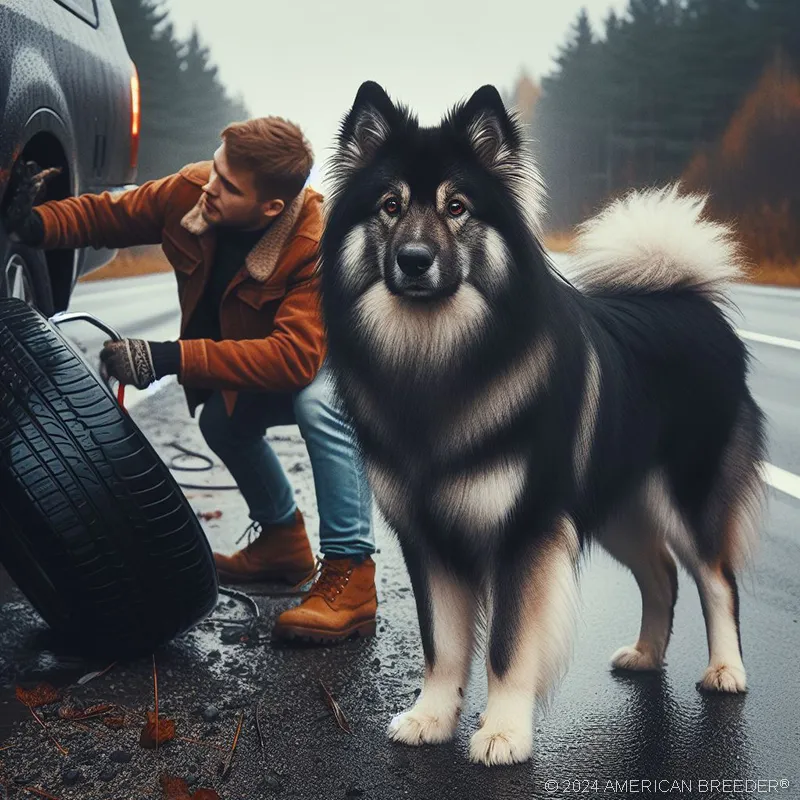 Size, weight, and physical appearance:
Size, weight, and physical appearance:
The Norwegian Elkhound stands proudly as a medium to large-sized breed, with females typically weighing between 48 to 55 pounds and males ranging from 55 to 60 pounds. Their well-proportioned bodies are characterized by a strong build and an alert expression.
Coat type, color variations, and patterns:
One of the breed's most striking features is its double coat, designed to withstand the harsh Nordic climate. The thick and insulating undercoat keeps them warm, while the weather-resistant outer coat showcases their beautiful silver-gray color. Black tips on the hairs give them a unique appearance and add to their aura of nobility.
Distinctive features and markings:
With their expressive almond-shaped eyes and tightly curled tails resting on their backs, Norwegian Elkhounds exude elegance and grace. The black mask-like markings on their faces contribute to their distinguished appearance.
Average litter size:
A typical litter of Norwegian Elkhound puppies can consist of four to six adorable pups. The joy of watching these little balls of fur grow into strong and agile companions is a delight like no other!
Temperament and Personality
Typical temperament traits and behavior tendencies:
The Norwegian Elkhound is a bundle of loyalty, affection, and intelligence, all wrapped up in one charming package. Known for their friendly and social nature, they form strong bonds with their families and thrive on being part of the pack.
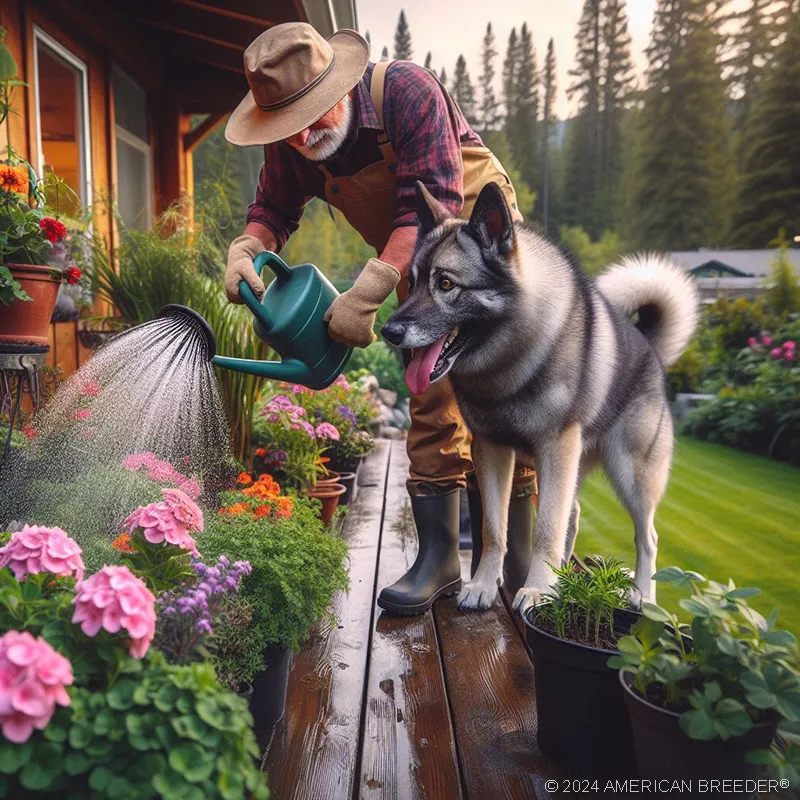 Energy levels and activity requirements:
Energy levels and activity requirements:
If you're looking for a canine adventure partner, the Norwegian Elkhound is up for the challenge! With a high energy level and a zest for exploration, they adore outdoor activities and are always eager to accompany you on hikes, runs, or play sessions in the park.
Compatibility with different lifestyles and family dynamics:
This breed's adaptability makes them suitable for various lifestyles, whether you're an active individual seeking a companion for outdoor adventures or a family looking for a loyal and loving pet. Their gentle and patient demeanor makes them great playmates for children, while their protective instincts make them watchful guardians of their home and loved ones.
Typical Behavior Issues:
While Norwegian Elkhounds are generally well-mannered, they can occasionally exhibit behavior issues that are common in many dog breeds. Some of these issues include:
Excessive barking:
Without proper training and mental stimulation, they might use their voices more than you'd like.
Separation anxiety: This breed loves being part of the family, so extended periods of isolation can lead to anxiety-related behaviors.
Resource guarding: Like many dogs, they may exhibit territorial behavior over their food or toys.
V. Trainability and Intelligence
Trainability level and ease of learning:
The Norwegian Elkhound's intelligence and eagerness to please their owners make them highly trainable. However, they can also have a stubborn streak, so consistent and positive reinforcement training methods are essential for successful results.
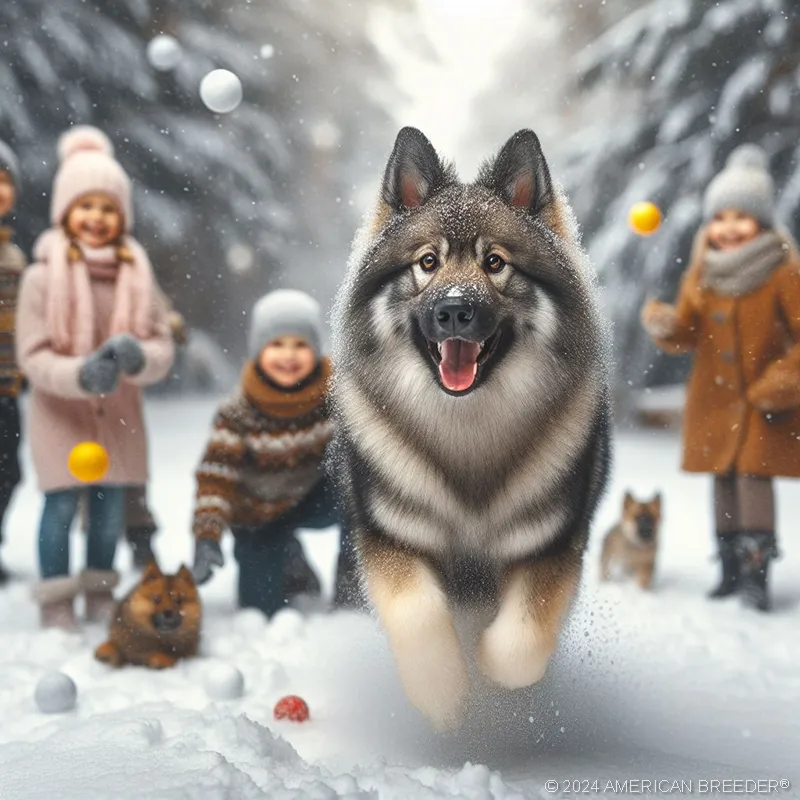 Intelligence and problem-solving abilities:
Intelligence and problem-solving abilities:
Get ready to be amazed by your Norwegian Elkhound's problem-solving skills. Their sharp minds and analytical thinking make them adept at figuring out puzzles and finding solutions to challenges.
Recommended training approaches and techniques:
Positive reinforcement is the key to training your Norwegian Elkhound effectively. Utilizing rewards, praise, and treats when they exhibit desired behaviors will motivate them and strengthen the bond between you.
Activities and training best suited for this breed:
The Norwegian Elkhound thrives in activities that stimulate both their body and mind. Engage them in agility training, where they can showcase their speed and agility, or introduce them to scent work, tapping into their excellent tracking instincts.
Practical Considerations
Size of sleeping quarters depending on size:
Despite their larger size, Norwegian Elkhounds can comfortably reside in apartments or smaller living spaces if provided with ample exercise opportunities. However, a larger home with access to a secure outdoor area is ideal for them to roam and explore.
Typical annual veterinary cost:
As responsible dog owners, it's essential to factor in annual veterinary costs for routine check-ups, vaccinations, and preventive medications. Expect to budget for regular veterinary visits to ensure your Norwegian Elkhound's health and well-being.
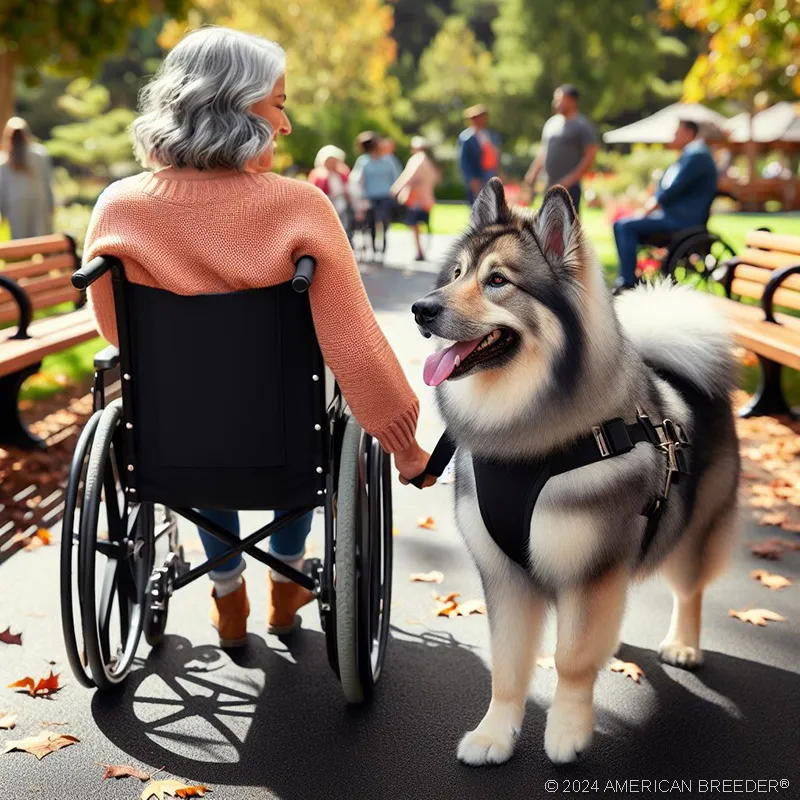 Type of grooming and annual cost:
Type of grooming and annual cost:
Maintaining the Norwegian Elkhound's luxurious coat requires regular grooming. Brushing them at least once or twice a week will help keep their fur clean and prevent matting. Additionally, occasional baths are necessary to maintain their pristine appearance.
Energy level and daily exercise needs:
The Norwegian Elkhound is a breed bursting with energy, and they thrive on daily exercise and mental stimulation. A minimum of 60 to 90 minutes of physical activity each day is essential to keep them content and prevent behavioral issues arising from boredom. Long walks, runs, or play sessions in a fenced yard will help them burn off their abundant energy and keep them physically fit.
Level of playfulness:
Prepare for endless fun and playfulness with your Norwegian Elkhound! Their spirited and lively nature means they're always up for a game of fetch, tug-of-war, or any interactive activity that allows them to bond with their human companions.
Level of intelligence:
Ranked among some of the most intelligent dog breeds, the Norwegian Elkhound will impress you with its problem-solving abilities and quick learning. Engaging them in challenging activities and interactive toys will keep their minds sharp and active.
Affection level and desired attention:
Get ready for a canine companion that craves affection and cherishes every moment spent with you. Norwegian Elkhounds are known for their loving and loyal nature, and they will shower you with endless kisses and tail wags.
Friendliness toward strangers:
While Norwegian Elkhounds are naturally wary of strangers due to their protective instincts, they are not aggressive dogs. Early socialization and positive experiences with new people can help them become more comfortable and friendly around unfamiliar faces.
Health and Care
Common health issues or predispositions:
As with any breed, Norwegian Elkhounds may be prone to certain health conditions. These may include hip dysplasia, progressive retinal atrophy (PRA), and thyroid disorders. Regular check-ups with a veterinarian and a balanced diet are essential to maintain their overall health.
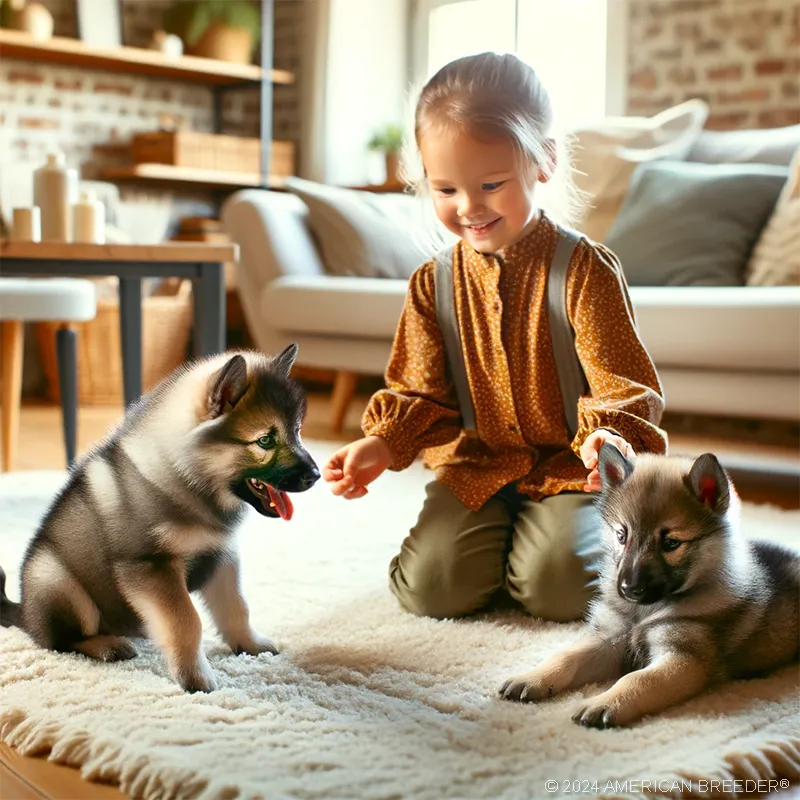 Allergies and specific dietary considerations:
Allergies and specific dietary considerations:
Some Norwegian Elkhounds may have food allergies or sensitivities, so it's crucial to observe their reactions to different ingredients and select a diet that suits their individual needs. Consulting with a veterinarian can help you identify any dietary restrictions your dog may have.
Lifespan and longevity expectations:
With proper care and a healthy lifestyle, Norwegian Elkhounds can live a long and fulfilling life, typically ranging from 12 to 15 years. Providing regular exercise, a balanced diet, and regular veterinary check-ups will contribute to their overall well-being and longevity.
Grooming requirements based on coat type and size:
The Norwegian Elkhound's luxurious double coat demands regular grooming to keep it looking its best. Weekly brushing is necessary to remove loose hair and prevent matting. During shedding seasons, more frequent brushing will help manage their shedding.
Exercise needs and recommendations:
Meeting the Norwegian Elkhound's exercise needs is essential to keep them physically and mentally stimulated. Engage them in various activities, such as long walks, jogging, hiking, or even interactive games that challenge their problem-solving abilities.
Nutrition and feeding guidelines:
A well-balanced diet is crucial for the health and vitality of your Norwegian Elkhound. Choose high-quality dog food that meets their specific nutritional requirements, taking into account factors such as age, activity level, and any dietary sensitivities they may have.
Socialization and Compatibility
Interaction with children, other pets, and strangers:
Norwegian Elkhounds are renowned for their gentle and affectionate nature, making them wonderful companions for children of all ages. They are patient and tolerant, and their playful demeanor ensures they'll become cherished playmates for kids.
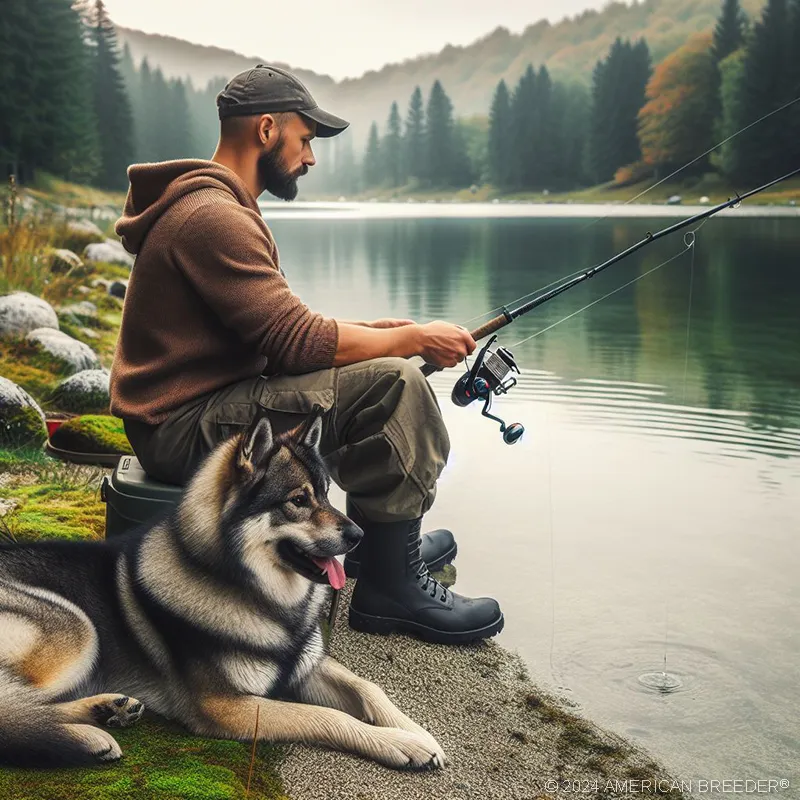 When it comes to other pets, proper introductions and early socialization are key to fostering positive relationships. With proper training and a gradual introduction process, they can coexist harmoniously with other animals in multi-pet households.
When it comes to other pets, proper introductions and early socialization are key to fostering positive relationships. With proper training and a gradual introduction process, they can coexist harmoniously with other animals in multi-pet households.
Socialization needs and tips for proper socialization:
Early and positive socialization is essential for Norwegian Elkhounds to grow into well-mannered and confident adults. Exposing them to various people, places, and experiences during their puppyhood will help them develop into friendly and well-adjusted dogs.
Precautions or considerations for multi-dog households:
When introducing a Norwegian Elkhound to a household with other dogs, it's essential to do so in a controlled and positive environment. Supervised interactions and patience will allow them to establish harmonious relationships with their new canine companions.
Living Arrangements and Environment
Suitability for different living arrangements:
The Norwegian Elkhound's adaptability makes them suitable for various living arrangements. Whether you live in an apartment in the city, a house in the suburbs, or a rural area with vast open spaces, they can thrive as long as their exercise and mental stimulation needs are met.
Space requirements and exercise options:
While Norwegian Elkhounds can adapt to smaller living spaces, they will truly thrive in homes with access to a secure outdoor area where they can roam and explore. Fenced yards are ideal for providing them with the freedom to play and burn off energy.
 Climate considerations and adaptability:
Climate considerations and adaptability:
With their thick double coat, Norwegian Elkhounds are well-equipped to handle colder climates. However, they may struggle in extreme heat, so it's essential to provide them with shade and fresh water during hot weather.
How big of a yard should a person have with this type of dog?
A medium to large-sized yard with ample space for your Norwegian Elkhound to run and play is ideal. A fenced area provides a safe environment for them to explore without the risk of wandering off.
Training and Obedience
Basic obedience training and commands:
Teaching basic commands such as sit, stay, come, and heel should be a priority during your Norwegian Elkhound's training. Consistent and positive reinforcement training methods will help them grasp these commands quickly.
Advanced training or specialized activities:
With their high intelligence and eagerness to please, Norwegian Elkhounds excel in advanced training and various specialized activities. Engaging them in agility training, where they navigate obstacles with precision, can be both mentally and physically stimulating.
 Behavioral challenges or specific training considerations:
Behavioral challenges or specific training considerations:
While the Norwegian Elkhound is an intelligent and trainable breed, they can also have a strong-willed side. Patience and positive reinforcement are crucial when dealing with any behavioral challenges that may arise. Additionally, early training and socialization will help prevent potential issues in the future.
Conclusion
Congratulations on unearthing the captivating world of the Norwegian Elkhound! This canine wonder is the embodiment of loyalty, intelligence, and playfulness, making them an extraordinary addition to any dog lover's life.
Before welcoming this majestic breed into your home, remember the importance of responsible ownership and providing a loving, suitable environment for your new companion. As you embark on this adventure together, treasure every moment of laughter, love, and shared experiences with your Gray Ghost by your side.
Continue to learn, seek expert guidance, and explore the depths of this remarkable breed. Remember, the bond between you and your Norwegian Elkhound will flourish through dedication, commitment, and a whole lot of tail-wagging fun!
Norwegian Elkhound Dog Quick Reference Guide
Breed Background: Origin: Norway | Breed Purpose: Hunting, Tracking | AKC Class: Hound Group | Year Recognized by AKC: 1913
 Appearance: Size: Medium | Weight: 48-55 pounds | Coat Type: Double coat, coarse outer and soft undercoat | Colors & Patterns: Gray | Distinctive Features: Curled tail, wedge-shaped head
Appearance: Size: Medium | Weight: 48-55 pounds | Coat Type: Double coat, coarse outer and soft undercoat | Colors & Patterns: Gray | Distinctive Features: Curled tail, wedge-shaped head
Temperament: Energy Level: 4 | Friendliness to Pets: 3 | Friendliness to Strangers: 3 | Trainability: 3 | Playfulness: 4 | Frequent Barker: 4 | Chase Instincts: 5 | Sense of Smell: 5 | Drive to Hunt: 5
Health & Care: Health Issues: Hip Dysplasia, Eye Problems | Lifespan: 12-15 years | Grooming Difficulty: Moderate | Exercise Needs: High
Socialization: Interaction with Children: Good, but supervise with younger kids | Interaction with Pets: Can be dominant, early socialization helps | Interaction with Strangers: Aloof but not aggressive | Ease of Training: Moderately easy
Suitable Living Arrangements: Apartment: No | House: Yes | Rural Area: Yes | Yard Size Requirements: Medium to large yard preferred
Training & Obedience: Trainability: 3 (Moderate) | Intelligence: 4 (High) | Obedience: 3 (Moderate) | Problem-Solving: 3 (Limited) | Easily Stimulated: 4 (High) | Focus Level: 3 (Moderate) | Easily Distracted: 3 (Moderate)
Financial Planning: Typical Price Range: $800 - $2000 | Initial Expenses: Vaccinations, Microchipping, Training | Ongoing Annual Expenses: Food, Vet Visits
Breeding: Reproductive Maturity: 6-12 months | Litter Frequency: 1-2 litters per year | Litter Size: 4-6 puppies | Stud Cost: $800 - $1500 | Breeding Challenges: Whelping difficulties possible
Did You Enjoy this Article? Share it and Help Us Spread the Word!
If you found this article helpful, we'd appreciate it if you could share it with your friends or link to it from your website, blog, or group! You can also use the convenient social share tabs on the left side of the screen to instantly share this page to your social media feed. For more ways to support and promote the American Breeder Community, visit our Share & Promote Together page for social media posts and memes you can copy and share. Your support means the world to us!
Disclaimer: The information provided in this article is for general informational purposes only and does not constitute legal, medical, financial, or professional advice. While we strive for accuracy, we make no representations or warranties regarding the completeness, accuracy, reliability, or suitability of the information. Please consult with a professional before making decisions based on the content provided. American Breeder Inc. assumes no responsibility for any errors or omissions or for the results obtained from the use of this information.
